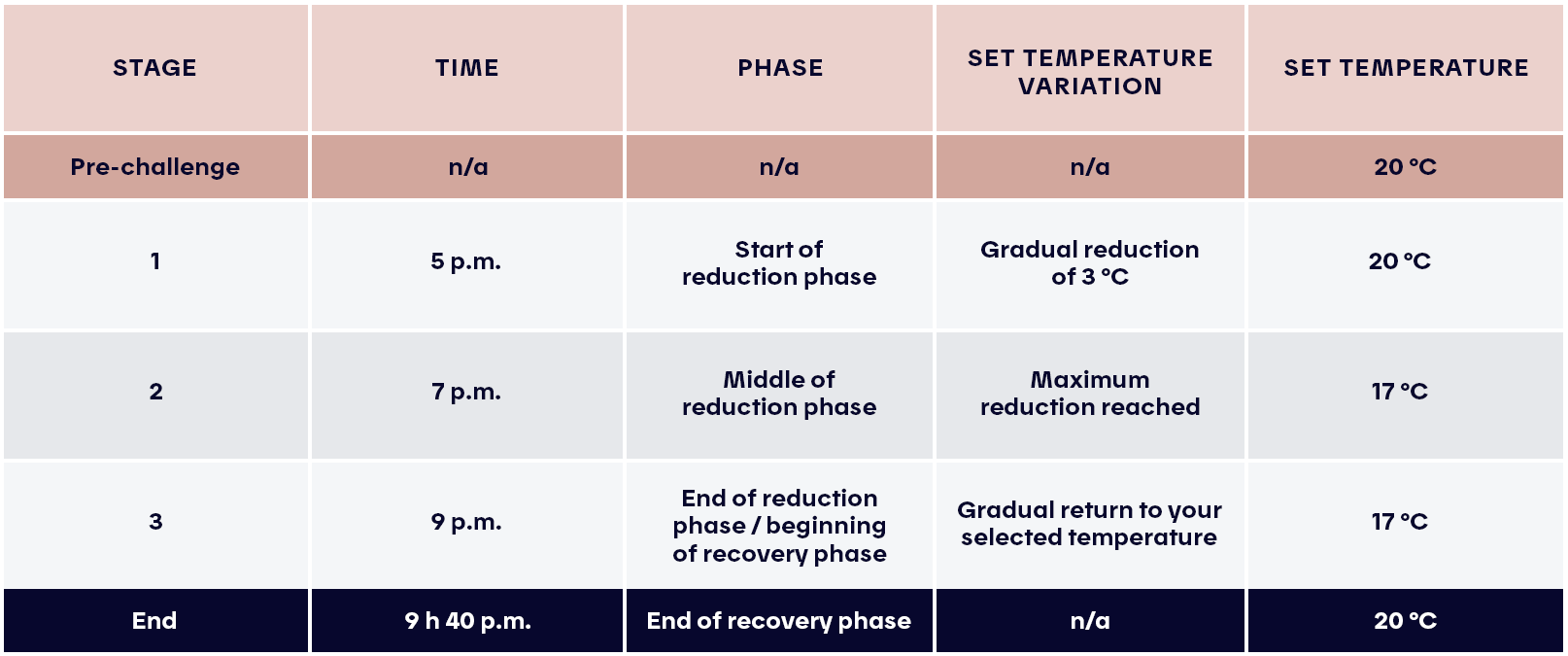The Charter of French language and its regulations govern the consultation of English-language content .
The Charter of French language and its regulations govern the consultation of English-language content .
Challenges
A challenge has three separate phases:
1. The optional preheating phase will gradually increase the set temperature of your thermostat by:
Note that this temperature increase is applied in relation to the comfort level calculated by Hilo. The comfort level is equivalent to the average temperature during the reduction phase, i.e. between 6 a.m. and 10 a.m. for a morning challenge or between 5 p.m. and 9 p.m. for an evening challenge.
2. Regardless of whether you participate in the preheating phase, the reduction phase will gradually lower the set temperature of your thermostat by:
Note that this temperature reduction is applied in relation to the comfort level calculated by Hilo.
3. The recovery phase will gradually return your thermostat’s set temperature to normal.
Note: The gradual variation of the set temperature during each phase occurs in stages and is applicable to each of the thermostats individually. These stages are illustrated in the examples below.
Examples
The following examples of Hilo challenges, which illustrate participation in Moderate and Intrepid mode, with or without scheduled scenes running during a challenge, will help you better understand how challenges work and how scheduled scenes can impact them.
Example 1
How it works

Example 2
The scheduled scenes have the following parameters:
NOTE: In this example, the comfort level is 19 °C.
How the comfort level is calculated (reduction between 6 a.m. and 10 a.m.):
6 a.m. to 8:15 a.m. = 135 minutes, and 8:15 a.m. to 10 a.m. = 105 minutes (for a total of 240 minutes)
[(20 °C x 135 min) + (18 °C x 105 min)]/240 min = 19 °C (19.125 to the nearest half degree)
During the recovery phase, the temperature gradually returns to your chosen set temperature, i.e. 18 °C.
How it works

The set temperature of any given thermostat at the end of a challenge will be one of the following:
NOTE : Programs created or modified up until the beginning of the reduction phase of a challenge, will be considered in the setpoint plan. A program created or modified after the beginning of the reduction phase will not be considered for the current challenge.
There are a few possible exceptions to the temperature variations during each phase.
1. What happens during the preheating phase
2. What happens during the reduction phase
3. What happens during the recovery phase